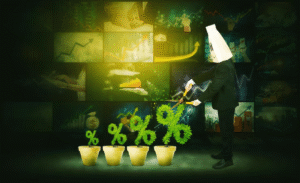213 Area Code: Top 10 Facts That Will Amaze You

devsdash
The 213 area code isn’t just a collection of digits — it’s a symbol of identity, a badge of pride, and a thread woven into the cultural, economic, and technological fabric of Los Angeles. From the crackling rotary phones of yesteryear to the smartphones of today, this three-digit number has witnessed the evolution of one of the world’s most iconic cities. Whether you’re an Angeleno born and raised or just curious about how area codes tell stories, you’re in for a fascinating ride. Let’s dive into the gritty, glamorous, and utterly captivating world of the 213 area code.
213 Area Code
The 213 area code has long been synonymous with downtown Los Angeles, the beating heart of the city where skyscrapers reach high and ambition runs deep. Introduced in 1947 as one of the original North American area codes, 213 once covered the entire southern half of California. Over the decades, its reach has shrunk as the population grew, but its cultural influence has only amplified.
Unlike other area codes that quietly faded into obscurity after being split or overlaid, 213 held its ground, becoming a kind of digital signature for the city’s core. Today, it’s a number associated not just with a place, but with prestige, nostalgia, and even exclusivity. Businesses strive for 213 numbers. Locals brag about them. And Hollywood continues to romanticize them.
This numeric artifact is part of a larger story, reflecting LA’s explosive growth, its diversity, and its enduring place on the global stage. From tech startups to taco trucks, the 213 area code has something to say.
The Birth of 213: A Telephonic Revolution Begins
Back in 1947, the North American Numbering Plan launched the area code system to streamline long-distance calling. Among the first batch of these codes, 213 was assigned to Southern California, covering an immense swath of land. It was a time of innovation, optimism, and rotary dials. People marveled at the ability to connect across counties with just a few numbers.
Southern California was on the brink of a population boom, and this code represented not just a region but the future of communication. It was high-tech for its time, a symbol that Los Angeles had entered the national conversation — literally.
Shrinking Boundaries, Growing Identity
As LA’s population surged, so did the demand for phone numbers. Over the years, the 213 area code was split repeatedly. The first major split happened in 1951 when the 714 code was created. Then came 818, 310, 626, and many others. These changes were necessary to accommodate the region’s growth, but they also began to give 213 a kind of mythical status.
Each split made the area covered by 213 smaller, but somehow more important. It began to signify not a sprawling geography but a specific energy — urban, historic, and undeniably “LA.”
Hollywood’s Favorite Digits
There’s something inherently cinematic about the 213 area code. Maybe it’s the way it rolls off the tongue, or maybe it’s the countless movies, TV shows, and songs that reference it. From gangster rap in the 90s to glitzy dramas in the 2000s, 213 became a pop culture icon.
It’s been name-dropped by Dr. Dre, Snoop Dogg, and Tupac. It’s flashed on screen in crime shows, comedies, and even period pieces. And why not? It carries with it the pulse of downtown LA, a place filled with drama, diversity, and dreamers.
The 213 and the Rise of Downtown LA
Downtown Los Angeles, once overlooked and underutilized, has undergone a dramatic transformation in recent decades. High-rises, hip cafes, art galleries, and tech firms now call it home. And at the center of this revival? The 213 area code.
In real estate, businesses actively seek 213 numbers as status symbols. For many, it signals that they’re not just in LA — they’re in the heart of it all. This code now stands for sophistication, history, and hustle.
Overlays and Area Code Competition
In 2017, the 213 area code received an overlay — the 323 area code — to meet the rising demand for phone numbers. This meant new numbers in the same geographic region might start with 323 instead of 213. While practical, the move sparked a low-key turf war of sorts.
Long-time locals saw 213 as the “real” code, while newcomers embraced 323. Memes, jokes, and even business strategies emerged around the rivalry. It was playful, but it also highlighted how much people care about their digital identity.
Cultural Significance Beyond Numbers
For many Angelenos, 213 is more than just digits. It’s a cultural marker. Wearing a 213 shirt or tattooing it on your skin is a statement — one that says you know LA, you live LA, and you love LA. In communities throughout downtown, the code is part of murals, music, and marketing.
It’s become a shorthand for authenticity, especially as neighborhoods gentrify and evolve. For some, it’s a tether to a past filled with family-run shops, block parties, and a different kind of LA — one that’s not so easy to find anymore.
How the 213 Area Code Affects Businesses
In marketing and branding, having a 213 area code carries clout. It signifies a central location, credibility, and often a legacy of success. Startups, law firms, media agencies, and restaurants proudly display their 213 numbers on signage and business cards.
Even virtual businesses sometimes pay extra for a 213 number, just to associate themselves with downtown LA. In the digital age, where everything is global, these three digits can still anchor a brand in a physical, storied place.
Technological Evolution: From Landlines to Smartphones
When 213 was introduced, phones were bulky, wired, and shared across households. Today, they’re sleek, wireless, and personal. Yet the area code remains. That’s a testament to its adaptability and relevance.
The number has shifted from switchboards to servers, from copper wires to cloud calling. And yet, for all that change, 213 still means LA. It’s a bridge between analog history and digital future.
Real Estate and 213: A New Kind of Prestige
Owning or leasing property in a 213 ZIP code is seen as increasingly desirable. Gentrification and urban development have transformed these areas into hotspots for residential and commercial growth.
Luxury apartments, coworking spaces, and rooftop bars now dot the landscape. And with that rise, the 213 area code has become shorthand for being “in the know” — connected, trendy, and on the move.
The Social Media Effect
Influencers, entrepreneurs, and creatives have all embraced 213 in their social media bios, handles, and hashtags. It’s become part of LA’s visual language. A nod to location, yes, but also to vibe, legacy, and aspiration.
You’ll find #213 trending with streetwear brands, photojournalists capturing urban decay and rebirth, and nightlife promoters crafting the perfect aesthetic. In these spaces, the area code becomes a badge of culture.
The Voice of the People: What Locals Say
Talk to people in the 213 and you’ll hear pride. They’ll speak of taco stands open till 2 a.m., art walks on Spring Street, the smell of street vendors, and the sounds of languages mixing on every block. They’ll tell you the 213 isn’t just a number — it’s a lifestyle.
For many, holding onto a 213 number is about preserving identity, history, and belonging in a city that’s always changing.
Conclusion
The 213 area code is far more than just a set of numbers used to place a call. It’s an emblem of history, culture, and community. From its early beginnings as one of the nation’s original codes to its current status as a symbol of downtown LA chic, it has retained its relevance and expanded its influence. It tells a story — of innovation, of migration, of art and identity. And as Los Angeles continues to evolve, so too will the legacy of 213.






